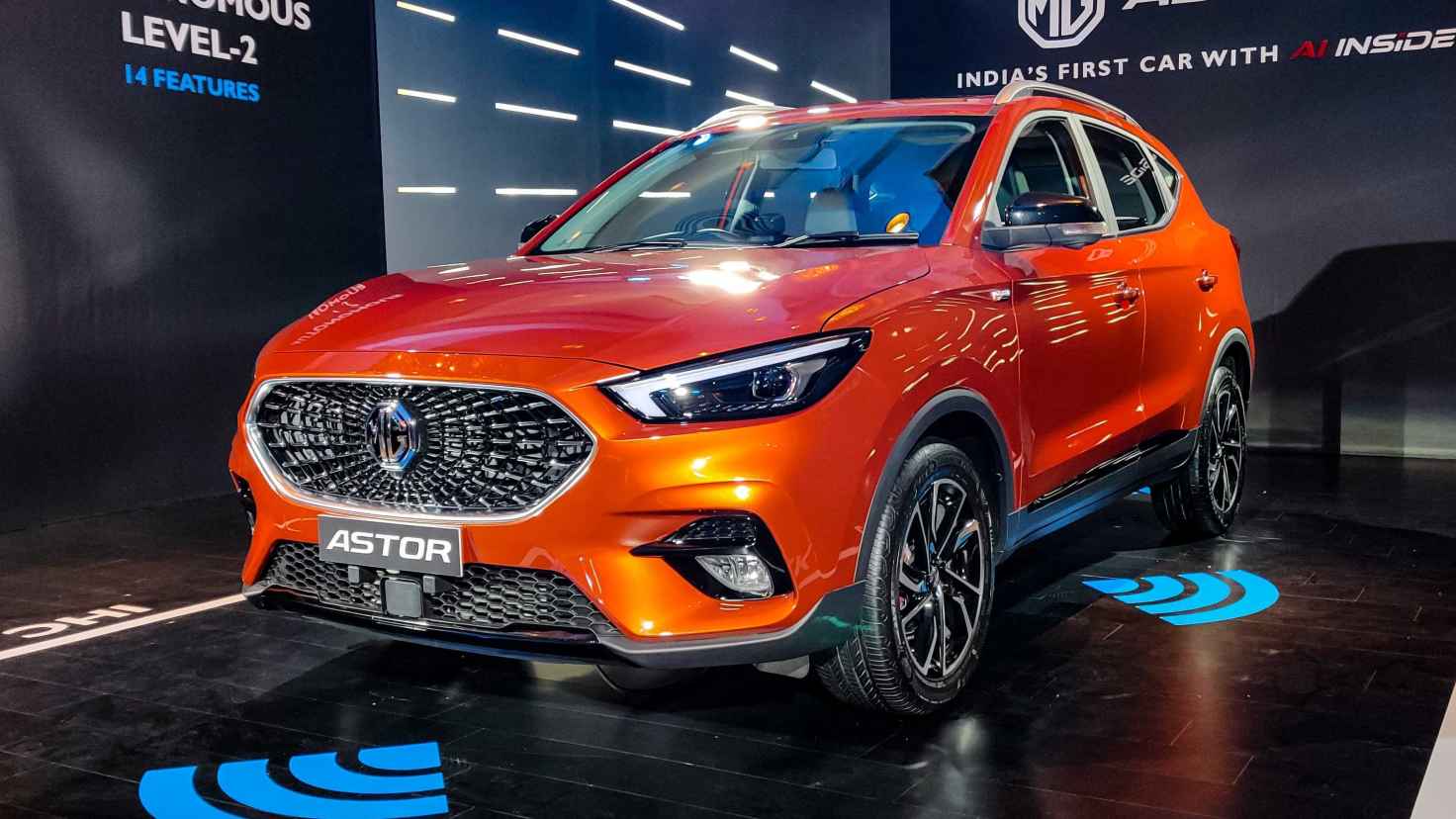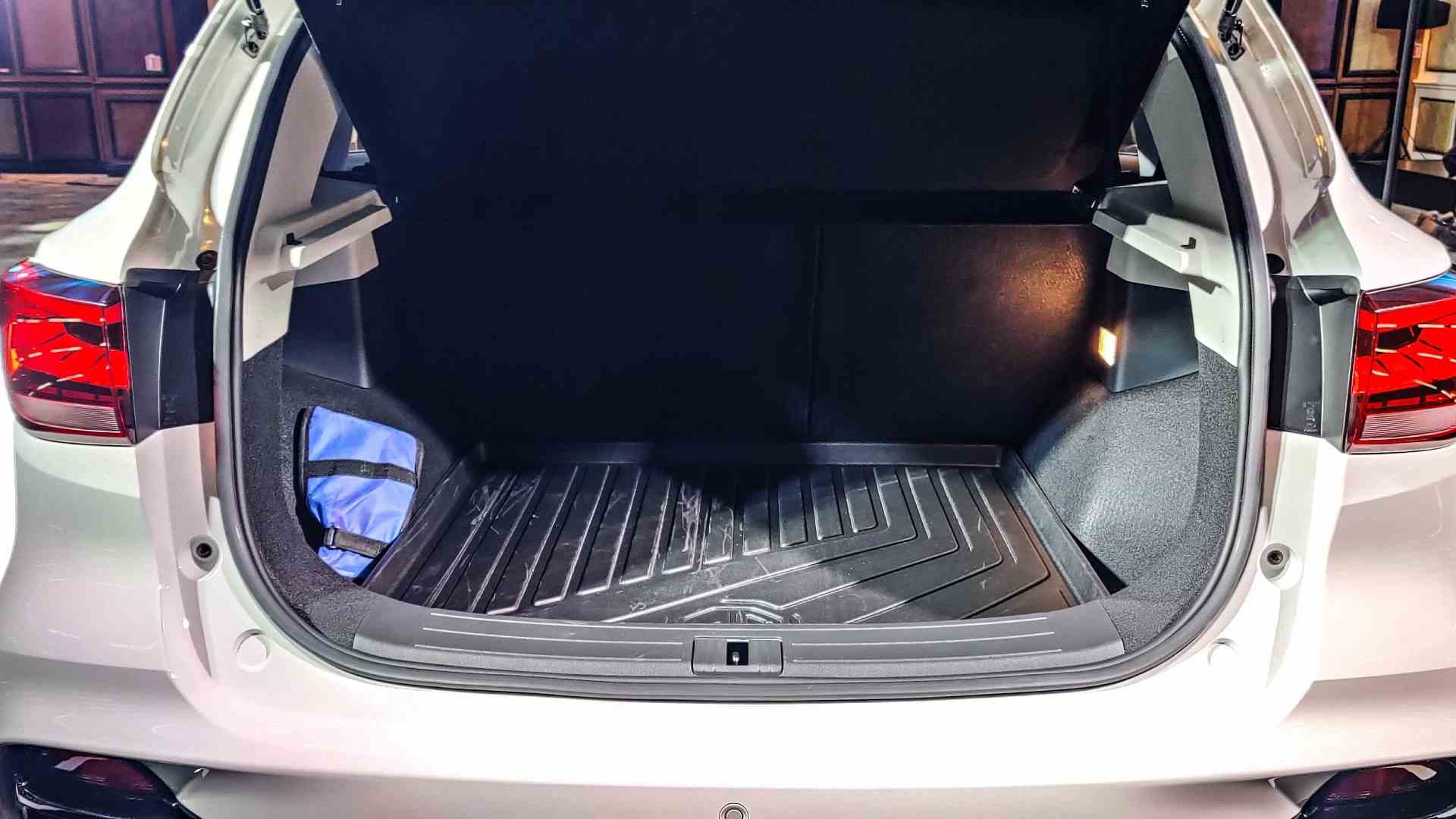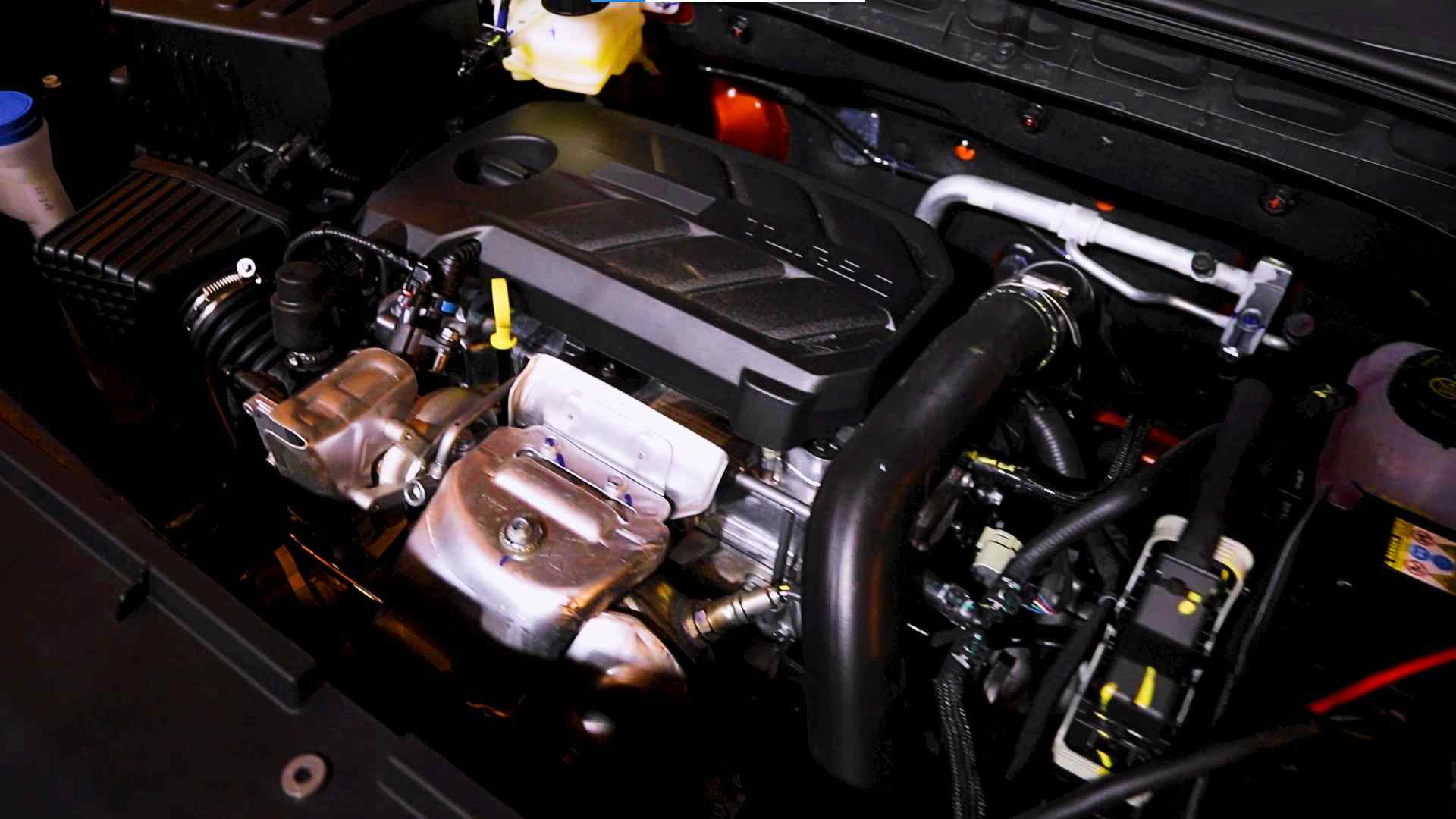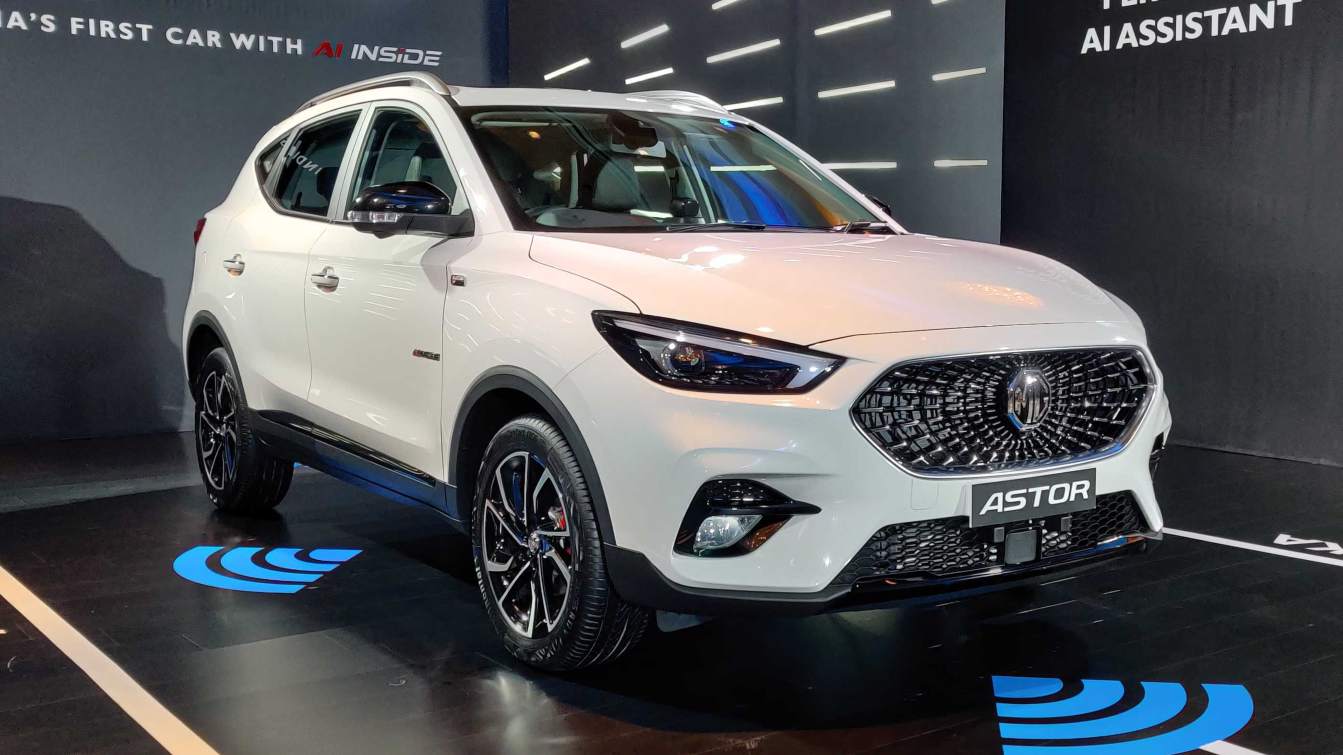MG Astor first look: With ADAS and in-car assistant, MG’s latest takes aim at Hyundai Creta and Kia Seltos- Technology News, Firstpost
Amaan AhmedSep 20, 2021 20:35:41 IST
Having gotten off to a cracking start with the Hector, MG is now turning its attention to one of the most lucrative but also most competitive vehicle segments in the country with its latest offering – the MG Astor. In its time of a little over two years in India, MG has introduced three models with varying levels of success, and the Astor is primed to take things to the next level. It won’t be easy – not when you’re battling titans in the form of the Hyundai Creta and Kia Seltos – but MG has played the tech card, equipping the Astor with segment-firsts in a bid to one-up the competition.
MG Astor: Design and styling
Of course, you’ve seen the Astor before – it is, after all, a renamed, petrol-powered version of the ZS India has become familiar with in its all-electric form since 2020. The MG ZS SUV has been on sale in global markets for a few years now, so it isn’t exactly new, and its age reflects in its design, which isn’t exactly striking. That said, the Astor is pleasing on the eye; it’s well-proportioned and doesn’t have a single bad angle. While it is basically a ZS (and a badge on the boot lid affirms this), the Astor’s face is quite different from the ZS EV’s, thanks to the attractive, India-specific ‘celestial’ grille, new LED head- and tail-lights and a restyled front bumper.
Riding on 17-inch ‘turbine-inspired’ alloys (with spicy red callipers specific to the Turbo version), the Astor has a planted stance, and is more rounded and crossover-like in its silhouette. Okay, the badges on the exterior (a grand total of six) are a bit of an overkill, and the twin faux exhaust exits built into the rear bumper (sporting a faux diffuser of its own) may not be to everyone’s tastes, but all in, the Astor is a good-looking SUV, and in the right colour, will certainly draw attention.
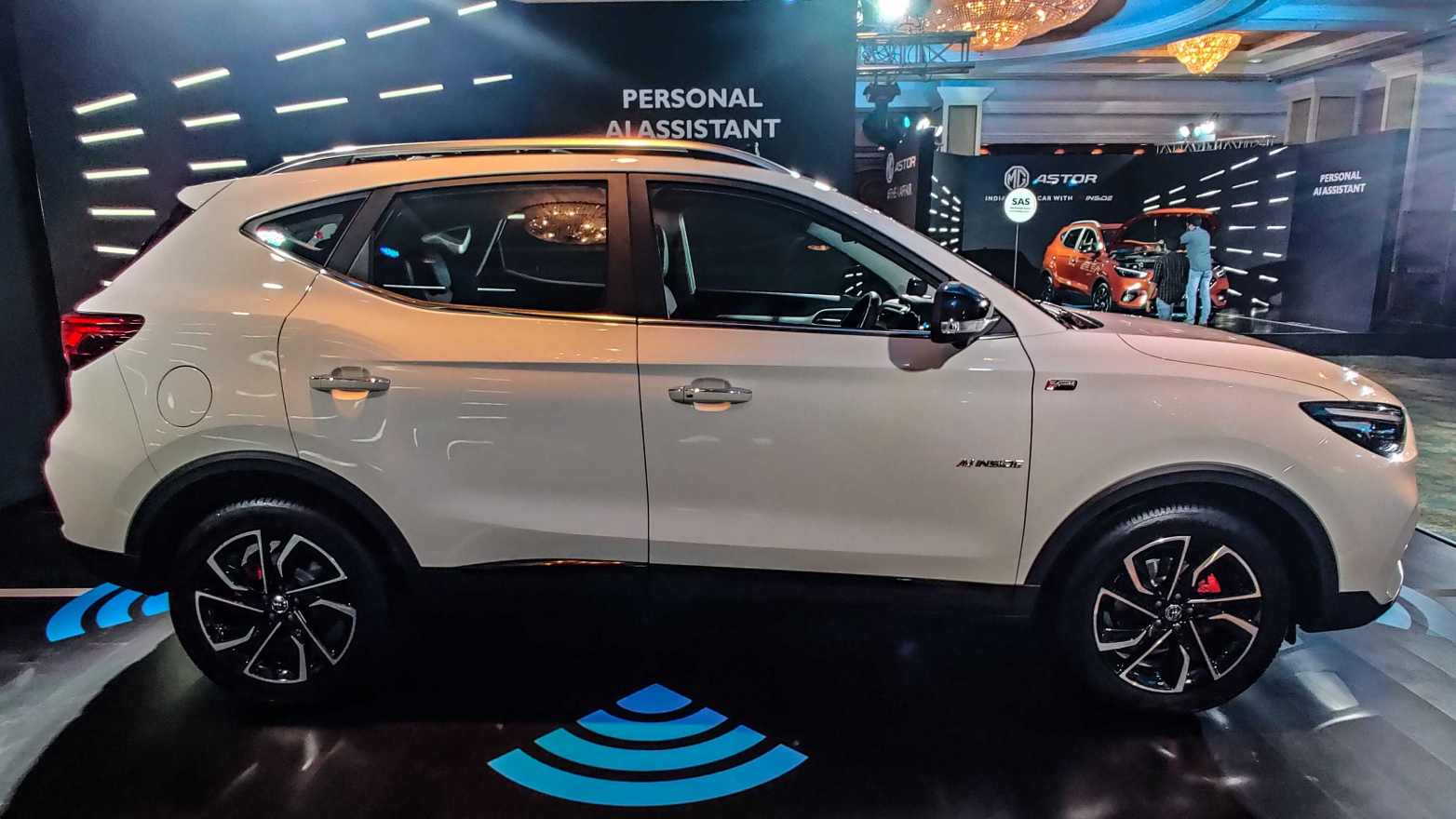
In profile, the Astor is well-proportioned, and the turbine-style alloys and red brake callipers spice things up. Image: Tech2/Amaan Ahmed
In terms of numbers on paper, the Astor is longer, taller and wider than the Creta, Seltos, Skoda Kushaq and the upcoming Volkswagen Taigun, but has a shorter wheelbase (2,585 mm) than all four of them. The exact boot capacity hasn’t been disclosed as yet, but the Astor’s is a reasonably wide and deep boot, even though stacking heavy items into it may be a task because of the high loading lip.
MG Astor: Interior and features
With almost all its offerings so far, MG has tried to woo buyers with a feature-heavy and smartly-appointed interior, and the Astor is no different. Most of what you touch when you step inside the Astor feels high-quality, including the soft-touch material used for the top of the dashboard and the leather trimmings. The maroon-on-black colour scheme is novel but may be an acquired taste, and it’s smart by MG to also offer beige-on-black and all-black options.
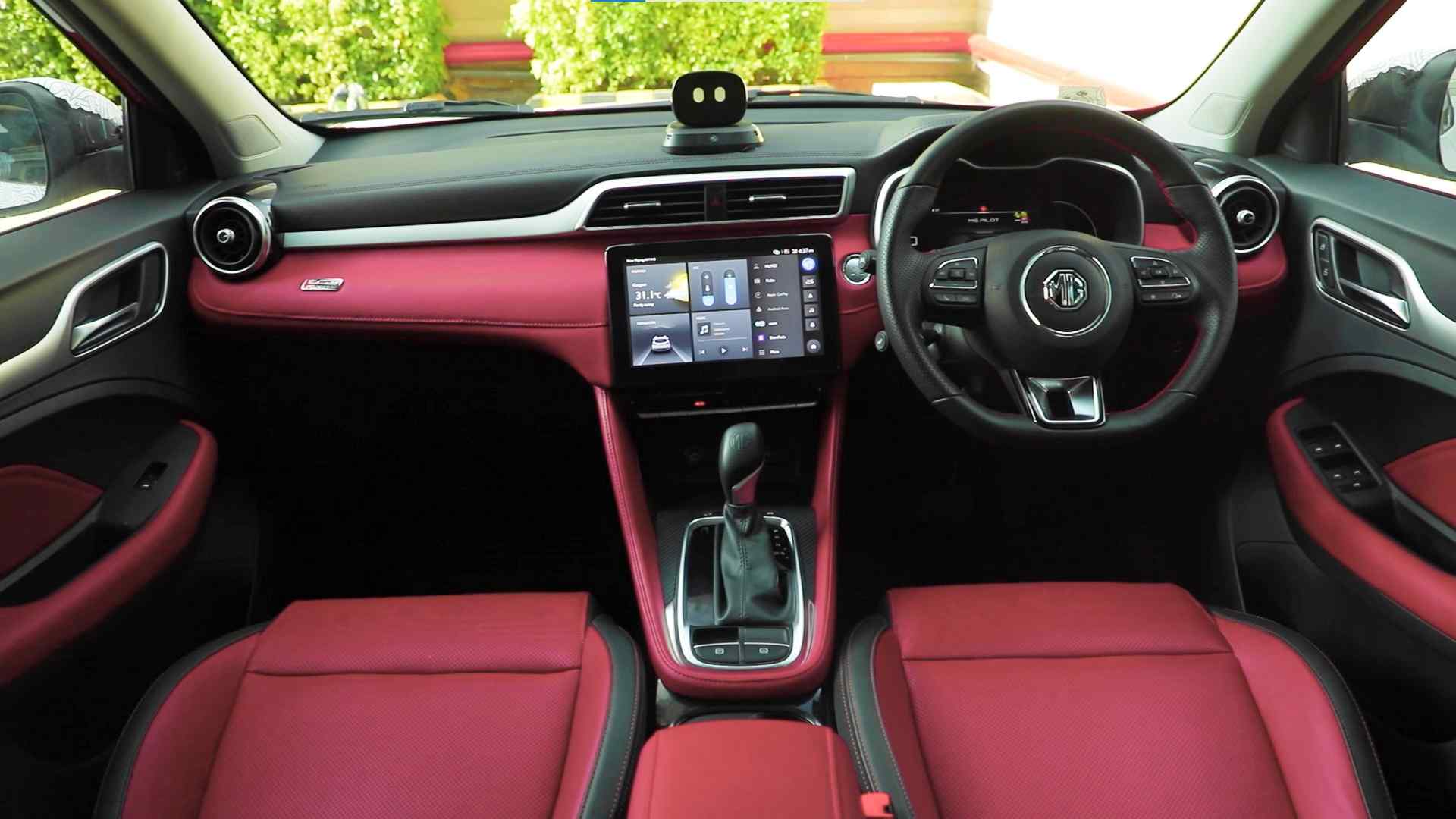
Black-and-maroon scheme will be an acquired taste; high-quality materials used on the dash. Image: MG
The dashboard itself is familiar from the ZS EV, but it features a freestanding, 10.1-inch touchscreen infotainment system (lightly angled towards the driver), and there’s a second, 7.0-inch display forming the all-digital instrumentation. While we could only experience it briefly at the showcase, the touchscreen was legible and responsive enough, and also offered some degree of customisation. Colours and graphics on both screens are sharp and smartly done. What potential buyers will be happy to know is that both screens will come standard on the Astor. Interior space is reasonably good for both front and rear passengers; however, the Astor’s rear seat will be best for two adults, as a middle passenger is likely to be a squeeze, and the prominent transmission tunnel hump eats into vital foot space.
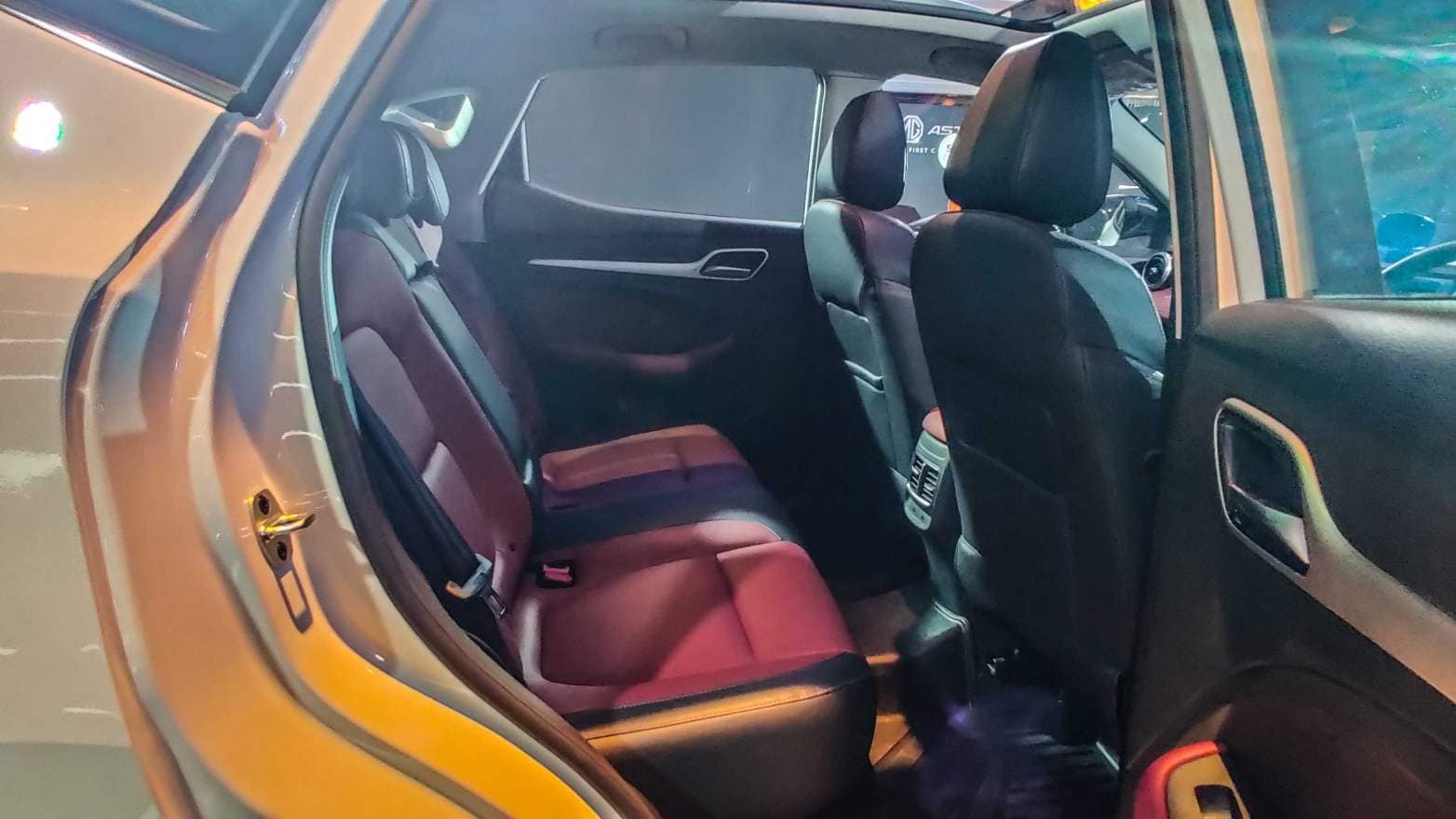
Rear seats have sufficient room, but will be a bit tight for accommodating three adults. Image: Tech2/Amaan Ahmed
In terms of equipment, the Astor is loaded – automatic climate control, six-way power adjustment for the driver’s seat, a panoramic sunroof, heated ORVMs, Android Auto and Apple CarPlay connectivity (but not wireless), air purifier, electric parking brake, automatic wipers, front and rear armrests, rear AC vents and over 80 connected car features, including an app-based ‘Digital Key’. The last of those utilises Bluetooth to unlock and start the SUV to provide access to an owner in case they forget to carry the vehicle key with them, adding a layer of convenience. Safety kit includes six airbags, traction control, electronic stability control and hill descent control.
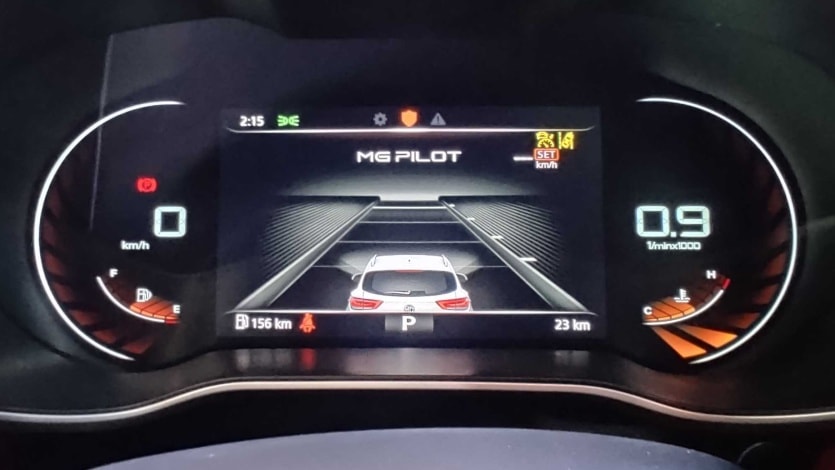
The 7.0-inch display in the digital instrument cluster is standard, as is the 10.1-inch infotainment screen. Image: Tech2/Amaan Ahmed
However, the party piece inside the Astor is its much-vaunted in-car assistant. Said to be powered by artificial intelligence, the little robot – mounted on the dashboard of the Astor, among the first SAIC vehicles globally to get this – employs directional microphones to pick up voice commands from the driver and front passenger. It is activated by a simple ‘Hello Astor’ prompt (just like ‘OK Google’), and swivels to face the person issuing the command, also using simple emojis to lend a human touch to the interaction. In addition to executing basic vehicle functions, such as opening/closing the sunroof or the windows, the assistant can also relay information on practically any topic by tapping into Wikipedia. If you’re wondering, no, you cannot engage with it from the back seat.

In-car assistant uses directional microphones and is quick to respond to commands. Image: Tech2/Amaan Ahmed
In our time with the Astor, the assistant worked mostly seamlessly, carrying out important functions with ease. Unfortunately, the exchanges aren’t exactly conversational yet – the assistant has been voiced by Padma Shree awardee and Paralympic athlete Deepa Malik, and its replies sound rather flat and robotic. The assistant listens to and understands commands with a great degree of accuracy, but the overall experience isn’t too different from using voice command functions in other vehicles. The good thing is, MG can modify and enhance the assistant and the experience of using it over time by issuing over-the-air updates.
Another USP for the Astor is the addition of segment-first advanced driver assistance systems (ADAS). It’s a first even for MG, as this is ADAS ‘Level 2’, unlike the ADAS Level 1 we’ve seen in the flagship MG Gloster SUV. In addition to hygiene ADAS functions such as adaptive cruise control, forward collision warning and automatic emergency braking, the Astor also features lane keep assist, lane departure warning, lane departure prevention, intelligent headlamp control (lowers headlight beam when it detects oncoming traffic), rear cross traffic alert (to safely help drivers reverse out of a parking spot) and speed assist (which detects roadside speed limit signs and accordingly adjusts the cruise control). To enable these functions, the Astor is equipped with five mid-range radars and a total of six cameras. Owners will even be able to adjust the sensitivity of these systems, or switch them off altogether from the infotainment system. MG is confident about ADAS Level 2 providing a whole new level of convenience and safety for the driver and vehicle occupants, but we’ll only know how well these systems work in the real world when we take the Astor out for a drive.
MG Astor: Engine and gearbox options
It’s on the powertrain front where the MG Astor appears to be lacking options. For now, the Astor is a petrol-only offering, with two options to choose from – a 1.5-litre, four-cylinder unit (available with either a five-speed manual or an eight-step CVT automatic) making 110 hp and 144 Nm of torque, and a punchier 1.4-litre turbo-petrol (available with only a six-speed torque convertor automatic) putting out 140 hp and 220 Nm of torque.
While those figures are more or less par for the course, the Astor doesn’t have the same number of transmission options as the Creta and Seltos, and in comparison, is missing one vital option – that of a diesel engine. The 1.5-litre diesel in the Hyundai and Kia SUVs still finds many takers, with nearly 60 percent of Creta sales being that of the diesel version. It remains to be seen how buyers take to the absence of a diesel engine for the Astor.
MG Astor: Price, launch and availability
When it is launched early in October, the MG Astor is expected to be priced between Rs 10-17 lakh (ex-showroom), which would position it right against the Creta, Seltos, Kushaq and Taigun. Deliveries are expected to begin shortly after, but if market demand is high, waiting periods could be long because of semiconductors still being in short supply.
Overall, the Astor looks like a promising entry into the segment, one that could potentially lead to a significant rise in volumes for MG. Yes, the assistant feels gimmicky beyond a point, and the lack of powertrain options could be a put-off for some, but the Astor has plenty going for it in other departments for it to be a real threat to the segment leaders.
; if(!f._fbq)f._fbq=n;n.push=n;n.loaded=!0;n.version='2.0'; n.queue=[];t=b.createElement(e);t.async=!0; t.src=v;s=b.getElementsByTagName(e)[0]; s.parentNode.insertBefore(t,s)}(window,document,'script', 'https://connect.facebook.net/en_US/fbevents.js'); fbq('init', '259288058299626'); fbq('track', 'PageView');
For all the latest Technology News Click Here

